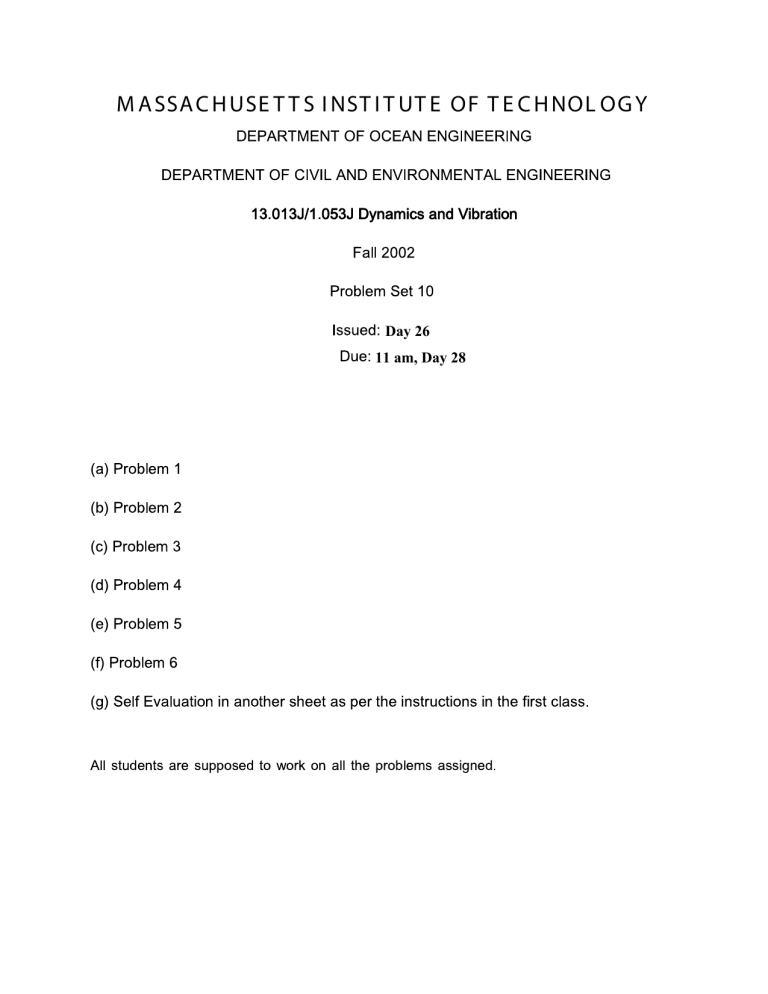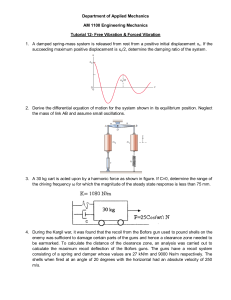M ASSAC H USE T T S I NST I... Day 26 11 am, Day 28

M ASSAC H USE T T S I NST I T UT E OF T E C H NOL OG Y
Day 26
11 am, Day 28
1. You did problems 6-45 and 6-52 in homework number 9. Show the equations of motion.
Find the undamped natural frequency in 6-45 and the undamped natural frequency and damping ratio expression in problem 6-52.
2. Do problem 6-61. a. b.
Determine the undamped natural frequency.
Find an expression for the damping ratio.
3. Do problem 8-11. In part a. clearly indicate your choice of coordinate system and show your equation of motion. In part b. assume 1.5% damping and plot the resulting motion.
4. Do problem 8.13 and determine the natural frequency, as well as the maximum possible amplitude. Assume the block vibrates at its natural frequency in the problem. They neglect to say that in the problem. If the large block vibrates at one half of the maximum possible amplitude, what is the magnitude of the friction force between the large and small blocks.
5. Estimate the natural frequency of the Sea Star TLP in heave. Data on the TLP will be given out on Day 27.
6. a. Do problem 8-35 in the text book. It is important to add to the books statement that you are to assume that the rotational inertias of the shafts are small in comparison to the propeller as well as to the turbine.
The turbine is for the purpose of the problem assumed to be so massive that it does not move in response to the twist of the shafts. b. An experiment is conducted in air in which the propeller is given an initial angular deflection of 0.04 radians and released. The observed vibration frequency is measured and found to be 3.0 Hz. The amplitude of vibration amplitude decreases from 0.04 radians to
0.02 radians in 10 cycles. The same experiment is conducted in water and the vibration frequency is found to be 2.0 Hz. The amplitude of the vibration decreases to 0.02 radians in
3 cycles. i. Explain the decrease in natural frequency. ii. Draw the time history of the angular motion in water as a function of time and label the time and amplitude of the points at 0.04 and 0.02 radians. What is the equivalent linear damping ratio of the system. What is ratio of the damped to the undamped natural frequency for the system in water.











